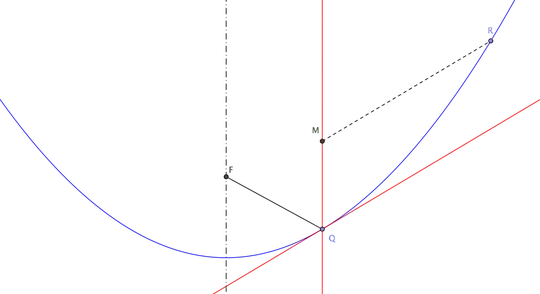I am reading an old book which mentions the fundamental properties of conic sections in this way:
It was pointed out that the application of areas, as set forth in the second Book of Euclid and extended in the sixth, was made by Apollonius the means of expressing what he takes as the fundamental properties of the conic sections, namely the properties which we express by the Cartesian equations $$y^2 = px$$ $$y^2 = px \mp{p\over d}x^2$$ reffered to any diameter and the tangent at its extremity as axes...
I am trying to understand what these equations represent. Tried searching online to no success, I guess it is because the language was different back then. Does anyone know what is meant by this?

